order
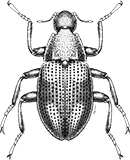
Coleoptera
“Adult Beetles”

Coleoptera
“Larval Beetles”

Diptera
“True Flies”

Ephemeroptera
“Mayflies”

Hemiptera
“True Bugs”

Lepidoptera
“Aquatic Caterpillars, Snout Moths”

Megaloptera
“Alderflies, Dobsonflies, and Fishflies”
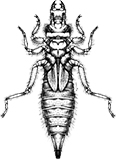
Odonata
“Dragonflies and Damselflies”

Plecoptera
“Stoneflies”

Trichoptera
“Caddisflies”
family
Tipulidae
genus
Tipula
“Large Crane Flies”
Genus Overview
This widespread genus includes more than 30 North American species in freshwater habitats. Larvae of aquatic species live in both fast- and slow-flowing portions of streams and in the weedy edges of lakes, where they burrow in detritus. There they usually shred dead plant material, but can also shred living plant tissue and gather tiny bits of organic matter. Some may also eat algae or small animals that are on the plant material they are shredding.
Characteristics
POLLUTION TOLERANCE
Southeast: 7.7 and higher
Upper Midwest: 4 and higher
Midwest: 4 - 7.2
Mid-Atlantic: 4 and higher
0 = least tolerant, 10 = most tolerant
FEEDING HABITS
Collector / Gatherer
Shredder / Detritivore
Shredder / Herbivore
Shredder / Detritivore
Shredder / Herbivore
MOVEMENT
Burrower
DISTRIBUTION
Widespread (east of the Rocky Mtns.)
HABITAT
Lentic-littoral
Lotic-depositional
Lotic-erosional
Lotic-depositional
Lotic-erosional
Diagnostic Characters
order
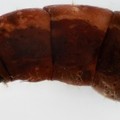
Legs Absent
family

Head Capsule Sclerotized and Mostly Retracted
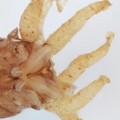
Lobed Posterior Spiracles with Hair
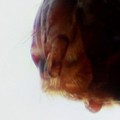
Mandibles Moving Horizontally
+ Expanded Character List
Order:
Wings and wing pads absent. Eye spots sometimes visible, but compound eyes absent. Segmented legs absent, but sometimes fleshy prolegs present. Sometimes with distinct head, often without head or with head drawn deeply into thorax. Body flattened, cylindrical, or maggot-like.
Family:
Larvae lacking fleshy projections on thoracic and abdominal segments. Posterior spiracular disc bordered by 6 (rarely 8) lobes (2 dorsal, 2 dorsolateral, 2 ventral); lobes usually subconical, sometimes short and blunt. As for all crane flies, adults usually large, with long legs and V-shaped sutures on top of mesothorax, but terminal segment of each maxillary palp longer than previous 2 segments combined and antennae each 13-segmented.
Genus:
Body with short hairs evenly distributed. Lobes of spiracular disk short, rarely more than twice their basal width, with sparse or short hairs. Distance between posterior spiracles as great or greater than diameter of one spiracle.


Dorsal
Lateral



